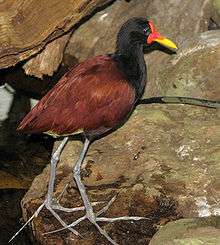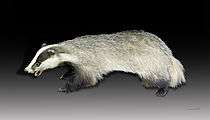Hamiltonian spite

Within the field of social evolution, Hamiltonian spite is a term for behaviours occurring among conspecifics that have a cost for the actor and a negative impact upon the recipient.
Theories on altruism and spitefulness
W. D. Hamilton published an influential paper on altruism in 1964 to explain why genetic kin tend to help each other.[1] He argued that genetically related individuals are likely to carry the copies of the same alleles; thus, helping kin may ensure that copies of the actors' alleles pass into next generations.
While this became a widely accepted idea, it was less noted that Hamilton published a later paper that modified this view.[2] This paper argues that by measuring the genetic relatedness between any two (randomly chosen) individuals of a population several times, we can identify an average level of relatedness. Theoretical models predict that (1) it is adaptive for an individual to be altruistic to any other individuals that are more closely related to it than this average level, and also that (2) it is adaptive for an individual to be spiteful against any other individuals that are less closely related to it than this average level. The indirect adaptive benefits of such acts can surpass certain costs of the act (either helpful or harmful) itself. Hamilton mentioned birds and fishes exhibiting infanticide (more specifically: ovicide) as examples for such behaviours.
Briefly, an individual can increase the chance of its genetic alleles to be passed to the next generations either by helping those that are more closely related, or by harming those that are less closely related than relationship by chance.[3][4]
Doubts about the adaptive nature of spiteful behaviour
Though altruism and spitefulness appear to be two sides of the same coin, the latter is less accepted among evolutionary biologists.
First, unlike the case with the beneficiary of an altruistic act, targets of aggression are likely to act in revenge: bites will provoke bites. Thus harming non-kin may be more costly than helping kins.
Second, presuming a panmictic population, the vast majority of pairs of individuals exhibit a roughly average level of relatedness. For a given individual, the majority of others are not worth helping or harming. While it is easy to identify the few most closely related ones (see: kin recognition), it is hard to identify the most genetically distant ones.
Most terrestrial vertebrates exhibit a certain degree of site fidelity, so levels of kinship tend to correlate negatively with spatial distance. While this may provide some cues to identify the least related individuals, it may also ensure that non-kin rarely if ever meet each other.
Spiteful behaviour in animals
Infanticide
Many animal species exhibit infanticide, i.e. adults tend to kill the eggs or the offspring of conspecifics, even if they do not feed on them (in the absence of cannibalism).[5] This form of spitefulness is relatively free from the threat of revenge – provided that the parents and relatives of the target are either weak or far away. Infanticide may not be a form of spite as in many cases the loss of offspring to the female brings it back into estrous providing a mating advantage to an infanticidal male. This is seen in lions. [6]

Aggression by means of pathogens
An individual carrying a long-lasting infection of virulent pathogens may benefit from (1) channelling the flow of pathogens from its own body away from its kin and (2) directing them toward non-kin conspecifics. The adaptive nature of this behaviour has been supported by the analysis of theoretical models [7][8] and also by the analyses of the behavioural repertoire of different animal species.[9] Thus, tuberculosis-infected European badgers and rabies-infected dogs equally tend to emigrate from their natal ranges before starting to distribute the pathogens. Similarly, wild herds of Asian elephants tend to defecate into drinkwater holes apparently to keep rival herds away.[10]

Spiteful behaviour in humans
Wartime infanticide
Throughout human history, war often emerges as a costly form of aggression typically targeting the non-kin enemy. Naturally, most wars appear to be motivated by potential benefits other than the genetic. Nevertheless, the widespread occurrence of rape and infanticide during periods of war indicates Hamiltonian elements as well. Infanticide is a biologically spiteful action in that it costs the killer time and energy, and opens the killer to the threat of revenge, without any direct compensating benefits. Rape, by contrast, is not, in the strict definition of the word, biologically spiteful as it is likely to have a direct fitness increase on the rapist (by increasing his number of direct descendants in the next generation, should the victim fall pregnant).
Economy
It was recently suggested that spiteful motivations may also play a role in economic decisions.[11]
Aggression by means of pathogens
Moreover, another paper argues that the motivation for biological aggression – i.e. using pathogens as weapons – is an inherent and common aspect of the human behavioural repertoire.[12] This argument contradicts the widespread belief that biological weapons are rare and aberrant tools of warfare and it is supported by the following observations:
- the use of pathogen weapons predates the scientific understanding of infections and epidemics;
- attempts of biological aggression are easy to hide and to overlook, thus it appears to be underrepresented in written history;
- it is a frequent component of our expectations concerning the likely behaviour of an enemy;
- it is also a frequent component of threats (see e.g. white powder letters);
- several languages appear to bear linguistic references to our motivation for biological aggression in profanity.
- given that wartime epidemics tend to kill people at a rate exceeding (or at least comparable to) that of traditional weapons, all wars fought in recorded history incorporated an implicit element of aggression by biological means.
References
- ↑ Hamilton WD 1964. The genetical evolution of social behaviour. Part I and II. Journal of Theoretical Biology 7: 1–16 and 17–52.
- ↑ Hamilton WD 1970. Selfish and spiteful behaviour in an evolutionary model. Nature 228: 1218–20.
- ↑ Vickery WL, Brown JS, FitzGerald GJ 2003. Spite: altruism’s evil twin. Oikos, 102, 413–16.
- ↑ Foster KR, Wenseleers T, Ratnieks FLW 2001. Spite: Hamilton’s unproven theory. Annales Zoologici Fennici 38: 229–38.
- ↑ van Schaik CP, Janson CH (eds.) 2000. Infanticide by males and its implications. Cambridge, UK: Cambridge Univ Press.
- ↑ Van Schaik, C. P., & Janson, C. H. (Eds.). (2000). Infanticide by males and its implications. Cambridge University Press.
- ↑ Rózsa L 1999. Influencing random transmission is a neutral character in hosts. Journal of Parasitology, 85, 1032–35.
- ↑ Dionisio F 2007. Selfish and spiteful behaviour through parasites and pathogens. Evolutionary Ecology Research, 9: 1199-1210
- ↑ Rózsa L 2000. Spite, xenophobia, and collaboration between hosts and parasites. Oikos 91: 396–400.
- ↑ Jog M, Watve M 2005. Role of parasites and commensals in shaping host behaviour. Current Science 89: 1184–91
- ↑ Boari M 2007. The ethics of rationality. Elucidations in the theoretical foundations of economics by relation to ethics. In: Vranceanu R, Djelic M-L, editors. Moral foundations of management knowledge. Cheltenham, UK: Edward Elgar Publications; p. 107–33.
- ↑ Rózsa L 2009. The motivation for biological aggression is an inherent and common aspect of the human behavioural repertoire. Medical Hypotheses 72: 217–19.